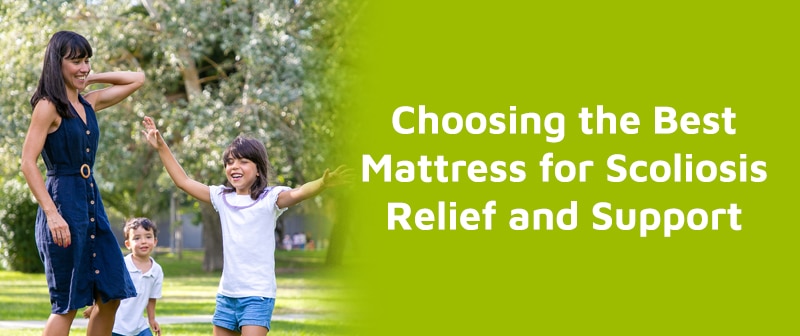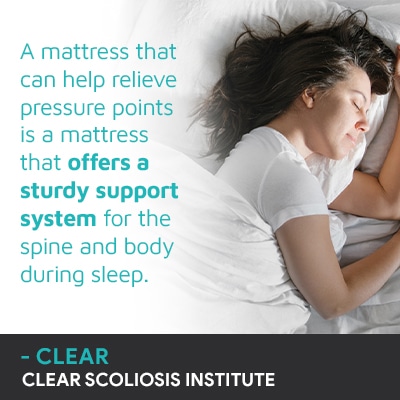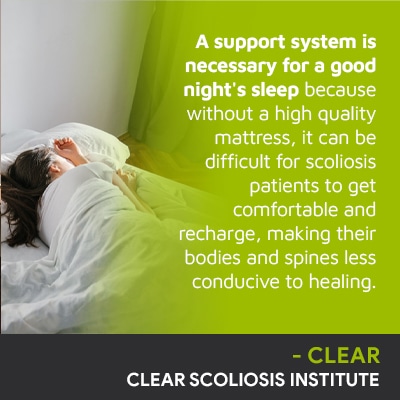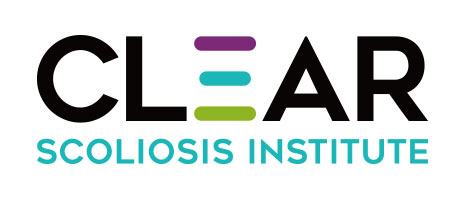
Sleep quality is an important factor for quality of life, and for people with scoliosis, it's also about helping the body and spine respond well to treatment. Getting a restful night's sleep can also be particularly challenging for those with scoliosis; this can be due to pain and/or difficulties finding a comfortable sleep position.
Choosing the best mattress for scoliosis can help patients get a good night's sleep, and this better prepares the body for the challenges of scoliosis and treatment. The best mattress for scoliosis is one that offers pressure relief and spinal support.
Before getting to some specific mattress examples, let's start with what to look for and why.
Scoliosis is a complex spinal condition that causes an unhealthy lateral spinal curvature to develop, and this means the spine is bending unnaturally to the side and rotating.
The spine's natural and healthy curves make it stronger, more flexible, and better able to handle stress from movement, impact, etc.
So a person with scoliosis has a structural issue within the spine as some vertebrae are so unnaturally tilted that they're no longer aligned with the rest of the spine, and this type of imbalance means instability.
And as a progressive condition, scoliosis is most likely to become more severe over time: making its effects more noticeable and difficult to reverse with treatment.
The more a scoliosis patient progresses, the more difficult it is to treat their condition, so it's always better to start treatment sooner, than later.
The spine needs support from its surrounding muscles, and a good mattress has to support proper spinal alignment during sleep.
No two cases of scoliosis are the same and firmness can be a preference, but it's generally recommended that people with scoliosis opt for a medium firm mattress to a firm mattress for optimal spinal support.
A firm mattress that promotes proper spinal alignment can also help alleviate pain: good for spinal health and function.
Pressure points refer to the areas of the body that have to support the weight of the rest of the body, so for side sleepers, pressure points include the lower back, hip and shoulder of whichever side they are sleeping on.
Scoliosis introduces a lot of uneven forces to the body and these uneven forces will increase with progression, so minimizing pressure points can mean pressure relief, pain relief, and helping to evenly distribute the body's weight so no one area is strained.

Pressure points can become sore so pressure point relief is helpful for those whose scoliosis pain makes it difficult to find a comfortable sleeping position.
So let's talk about some different types of mattresses and the general benefits they can offer people with scoliosis:
A medium firm mattress isolates motion and can provide more support than a soft mattress, but doesn't increase pressure points as much as a firm mattress can.
Memory foam mattresses for scoliosis can also help reduce pressure points on the hips, shoulders, and lower back because they mold to the body, making them comfortable for a variety of body/condition types.
A Hybrid mattress can offer a balance of innerspring coils and foam layers, know for both support and comfort.
Latex mattresses are made from natural organic materials and offer optimal spinal support.
A durable mattress with strong edge support can help maintain its firmness over time and is recommended for sleepers who regularly change sleep positions for more support.
Speaking of sleep positions, let's also touch on the best sleep positions for people with scoliosis as this can also affect sleep.
Knowing the best sleep position for spinal health is important for everyone, but for those diagnosed with scoliosis, it can also mean helping the spine be as responsive to treatment as possible.
A patient who's not sleeping due to pain and difficulty getting comfortable won't be as capable of handling the challenges of treatment, as someone who can regularly get a good night's sleep and recharge.
As a progressive condition, treating scoliosis is about managing an ongoing condition, and helping patients fine their preferred sleeping position and a good supportive mattress can make a big impact on quality of life.
Healthy sleep positions for scoliosis offer optimal support by maintaining optimal spinal alignment, and while they are also the best sleep positions for people in general, those with scoliosis have to be particularly mindful of the power of posture and body positioning.
In fact, a focus of non-surgical scoliosis treatment is on improving muscular support for the spine and postural awareness and remodeling.
The best position for sleeping is flat on the back; in this position, the body's weight is evenly distributed so pressure points are minimized, and the spine is held in a neutral and straight alignment.
A good cervical pillow is recommended to ensure the cervical spine is supported and properly aligned with the thoracic spine and the thoracic spine is aligned with the lumbar spine below.
After sleeping flat on the back, side sleeping is the best sleep position for spinal health and scoliosis, and it's commonly recommended that a thin pillow is placed between the knees for better spinal alignment and to minimize pressure on the hip.
The worst sleeping position for spinal health and support is sleeping on the stomach; stomach sleepers are arching their upper back unnaturally and this exposes the neck to uneven forces and can increase pain and other potential effects of scoliosis.
A mattress purchase is no small thing, considering the average length of time Americans keep a mattress is 7 to 10 years; that's a lot of potentially comfortable, or uncomfortable, nights.
Keeping in mind the different general points about sleep position and spinal health, the best mattresses for those with scoliosis are those that can help reduce scoliosis pain be relieving pressure points and offering optimal spinal support.
A mattress that reduces pressure points is one that evenly distributes the body's weight so no one section of the spine is exposed to additional strain: offering relief and support.

The Brooklyn Bedding signature hybrid mattress offers cooling top foam for temperature regulation, individually wrapped coils for optimal and customized spinal support, and high quality foam for pressure relief and body contouring.
The Nectar mattress is a memory foam mattress that offers cooling comfort for hot sleepers and body contouring for pressure relief. It offers medium-firm support and is a responsive mattress for frequent position changes.
The Saatva Rx mattress is a luxury mattress designed with the needs of people suffering from chronic back pain and joint pain in mind so is ideal for people with scoliosis. The Saatva is designed for optimal back support, pressure relief, and offers a Therapeutic Support Core® that conforms to a patient's individual movements and curves.
A good mattress for scoliosis is one that provides enough support to ensure the spine is as aligned as possible during sleep, and contours to the body to reduce pressure points and offer pressure relief.
Everyone should be mindful of spinal health and the best sleep position, but for people with scoliosis, leading a spine-friendly lifestyle is important for quality of life and potential treatment efficacy.
Sleeping on the back on a supportive mattress can help patients get a more restful night's sleep so their bodies are more conducive to healing and handling the rigors of treatment.
No two scoliosis cases are the same, so while some patients experience sleep problems related to their scoliosis, others might not, but in general, the more severe a person's scoliosis is, the more likely it is to cause noticeable effects like disrupting sleep.
The best way to minimize the potential effects of scoliosis, and to prevent them from getting worse over time, is to treat conditions proactively; here at the CLEAR Scoliosis Institute, this means starting treatment immediately following a diagnosis and assessing and addressing all condition effects, including potential sleep issues.

CLEAR provides a unique and innovative way of understanding scoliosis. Sign up to receive facts and information you won’t find anywhere else.
